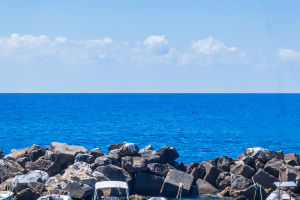A sea-crossing bridge is a bridge project built at sea, in a marine environment, usually on a large scale and with very high technical requirements.
Cross-sea bridges are bridges that span bays, straits, deep waters, inlets, or other ocean waters, and generally have long spans and lines, ranging from a few kilometers short to tens of kilometers long.
Some sea-crossing bridges are relatively long and usually consist of multiple bridges within bridges. To avoid affecting waterways or air routes, a part of the cross-sea bridge may also use undersea tunnel engineering.
Since the bridge is deep into the marine environment with complex and harsh natural conditions, the sea-crossing bridge can reflect the top technology of bridge engineering.
It may be hard to imagine how to build a bridge over the sea. Let's learn how a sea-crossing bridge is built.
The following major steps are required to build a bridge across the sea:
1. Pre-planning
Determine the location, length, width, capacity, and other basic parameters for the construction of the sea-crossing bridge, and carry out an environmental assessment, engineering survey, and other preliminary work.
2. Design plan
Based on the results of the preliminary planning, the bridge structure, load-bearing capacity, materials, construction methods, and other aspects of the design, the construction plan is developed.
3. Construction preparation
Pre-construction preparation work is carried out, including land acquisition, equipment procurement, personnel recruitment, etc., and a detailed construction plan and safety measures are also formulated.
4. Construction of piers
To support the deck of the bridge, piers need to be built on the seabed first. The construction crew will use drilling rigs or blasting to remove the rocks or soil from the sea floor, and then pour reinforced concrete into it to make it sink into the sea floor.
5. Bridge erection
When the bridge piers are built, the construction workers will erect bridges between the piers. Generally, some temporary bridges are erected first, and then the main bridge is gradually erected onto the temporary bridge until it is completely connected.
6. Installation of equipment
After the bridges are erected, bridge lighting, guardrails, signals, and other equipment need to be installed to ensure the safety and efficiency of the cross-sea bridges.
7. Acceptance and opening to traffic
After the construction of the cross-sea bridge is completed, acceptance and commissioning work is required to ensure that it meets the relevant standards and requirements. Once the acceptance is passed, the bridge can be opened to traffic and officially put into use.
In general, the construction of the bridge involves knowledge and technology from several specialized fields and requires coordination and cooperation from all parties to complete successfully. At the same time, the environmental and ecological impacts of the bridge construction need to be taken into account and given sufficient attention.


